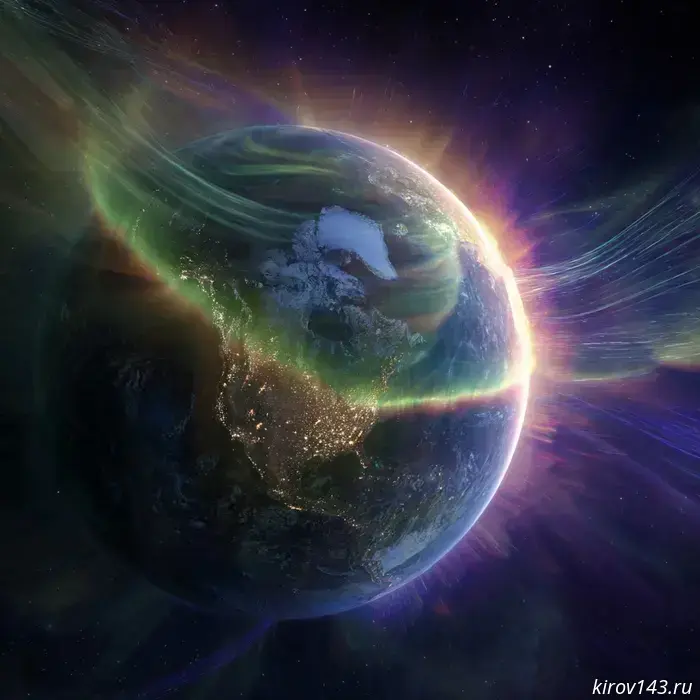
The strongest geomagnetic storm of the year is subsiding.
At the peak recorded on November 12, the Kp geomagnetic activity index reached G4.3–G4.7 levels — the most powerful event of 2025, although it did not reach the forecasted G5 maximum.
According to the laboratory, it was difficult to determine the exact sequence of solar impacts: three plasma clouds ejected by the Sun merged into one extended structure, and the individual phases of the event are almost indistinguishable. Presumably the strongest hit struck the leading fronts of the ejections, which were compressed and accelerated by the last, more powerful cloud. The main core of this ejection is now passing by Earth, and the solar wind speed has dropped to 800–1000 km/s instead of the expected 1400.
Against the backdrop of the main cloud's passage, at 4 a.m. Moscow time a powerful aurora began on Earth, peaking at 5:00. Its intensity reached 15 on a 10-point scale, and the auroras spread to latitudes of about 45 degrees — as far as Russia's southern borders. However, few were able to see them because dawn was approaching.
Scientists estimate the magnetic disturbance may persist until the end of the day, after which space weather is expected to stabilize. The likelihood of new strong flares is low — active regions on the Sun have exhausted their energy and are no longer Earth-directed.
Другие Новости Кирова (НЗК)
 In the Kirov Region, doctors saved a patient with a unique blood composition.
Specialists from the Kirov Blood Center helped district medical staff save a patient with an extremely rare blood type — such a case has been recorded in the region for the first time in ten years.
In the Kirov Region, doctors saved a patient with a unique blood composition.
Specialists from the Kirov Blood Center helped district medical staff save a patient with an extremely rare blood type — such a case has been recorded in the region for the first time in ten years.
 Automotive experts: spare parts could rise in price by 20 percent in 2026.
By the end of 2025, the average increase in spare parts prices was 6.8–7%, and in 2026 prices could jump by 15–20%.
Automotive experts: spare parts could rise in price by 20 percent in 2026.
By the end of 2025, the average increase in spare parts prices was 6.8–7%, and in 2026 prices could jump by 15–20%.
 In Kirov, the sports ground on Pavel Korchagin Street was renovated.
Improvements to the multi-purpose sports ground at the stadium on Pavel Korchagin Street in the Kominternovsky microdistrict have been completed.
They want to launch flights from Kirov to Samara.
Authorities reported they are exploring new air routes.
In Kirov, the sports ground on Pavel Korchagin Street was renovated.
Improvements to the multi-purpose sports ground at the stadium on Pavel Korchagin Street in the Kominternovsky microdistrict have been completed.
They want to launch flights from Kirov to Samara.
Authorities reported they are exploring new air routes.
 The Kirov Ministry of Finance will borrow 4.5 billion from banks.
The names of the organizations with which contracts will be signed were recently announced.
The Kirov Ministry of Finance will borrow 4.5 billion from banks.
The names of the organizations with which contracts will be signed were recently announced.
 The growth of real wages in Russia will almost stop in 2026.
In 2026, real wage growth for Russians will slow to 2.7%, almost half the Ministry of Economic Development’s forecast (5.7%) and significantly below the current pace (4.4%).
The growth of real wages in Russia will almost stop in 2026.
In 2026, real wage growth for Russians will slow to 2.7%, almost half the Ministry of Economic Development’s forecast (5.7%) and significantly below the current pace (4.4%).
The strongest geomagnetic storm of the year is subsiding.
The geomagnetic storm that has been affecting Earth for a second day is gradually weakening, but its effects may persist for about another day, experts at the IKI RAS laboratory said.
